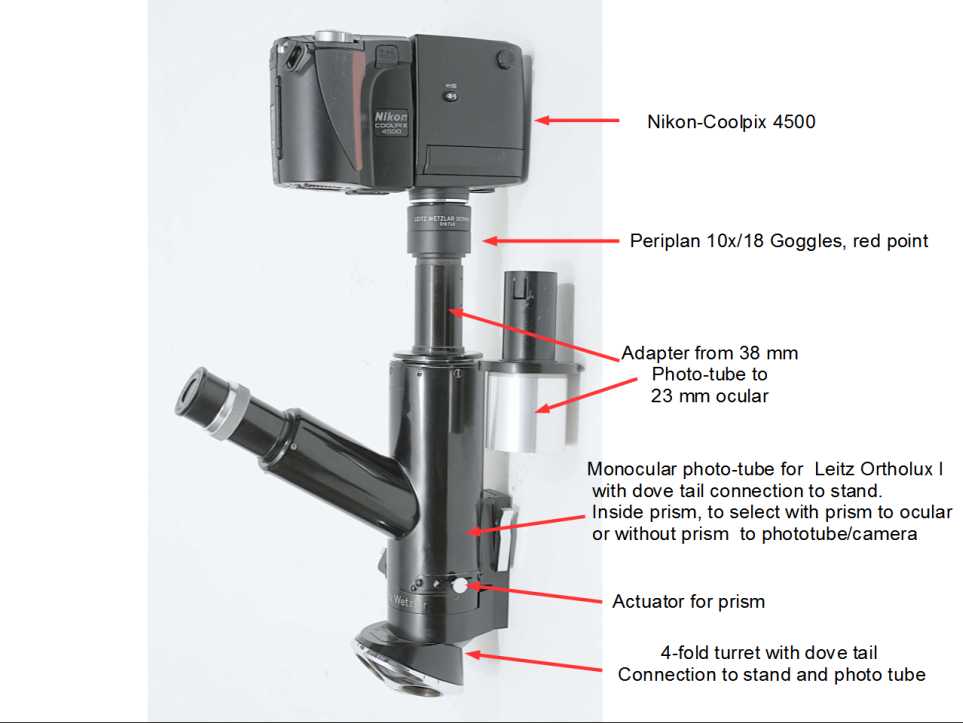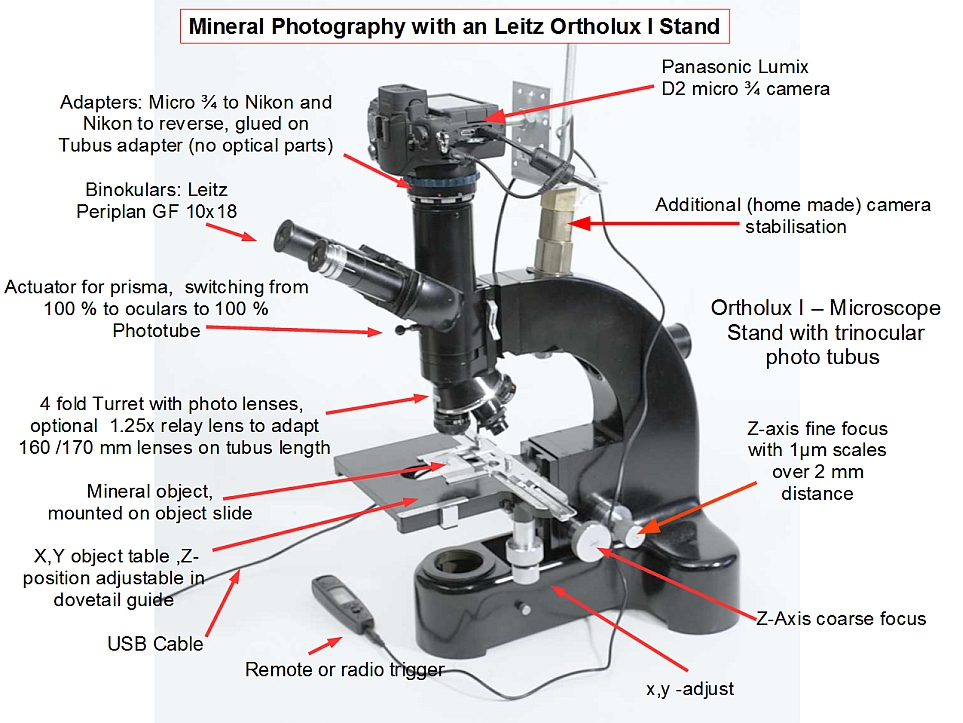|
Over time in search for a very solid
stand for photographing very small fields of view, ( this means in
the range of one Millimeter), I got a Leitz Ortholux I stand
via Ebay. It was without objective lenses, illumination optics,
oculars but with the trinocular photo tubus, a 4-fold Turret and
x,y stage.
The Leitz Ortholux I was marketed in the middle of
the 20th century from about 1938 to 1970 as a modular high end
microscope, followed by the Ortholux II.
To use it for
photography the Z -focus mechanics needed a re- grease otherwise else was working well. Then
subsequent oculars and my macro lenses have been added and it could
be used as an excellent microscope. A first camera adaption was made
with the camera adapter, the famous Periplan 10x18, goggles red point
fitted to Nikon cool pix 4500 as shown below with a monocular photo
tube. This worked well but i wanted to use a DSLR, as this can
used without camera optics and without relay lens expecting better
pictures.
|
This
was done first with a Canon EOS 400. As this camera
has a mirror and slotted shutter, much more vibration happened,
disturbing sharpness significant. Even with mirror lock up features
the results with small field of view have not been satisfactory.
Later I discussed the use of a micro four thirds camera with Stephan
Wolfsried. This type of cameras have a somewhat smaller imager but no
mirror, so I followed the idea of Stephan Wolfsried an adapted a
Panasonic Lumix D2 to my system. For the micro 4/3 lens
mount, adapters to almost any type of lenses are available
and the much shorter flange back of the micro 4/3 standard allows the use of almost
any lens with larger flange back by the suitable adapter.
During the adapting process of the
Lumix D2 also some trouble with vibrations from the shutter have
been observed, indicating that the weak point is not only the
within the camera, also the connection of the camera to
the photo tube is critical. All the adapters have some
tolerances. So the camera was fixed with an extra connection via the
standard 3/8” thread at the camera bottom to the microscope stand.
(see picture below). This improved sharpness much, but in very
critical cases it can be helpful to use longer exposure times (3-5
sec.)
|

